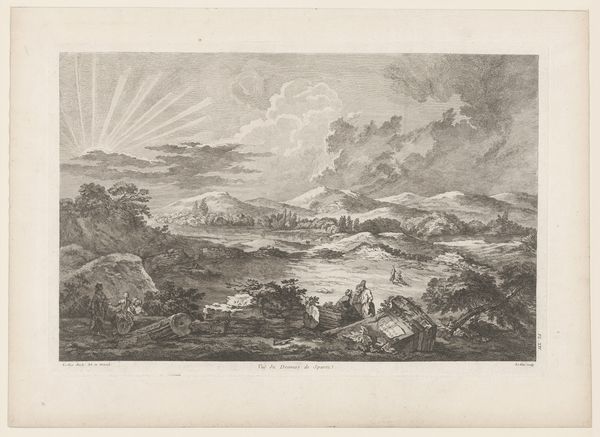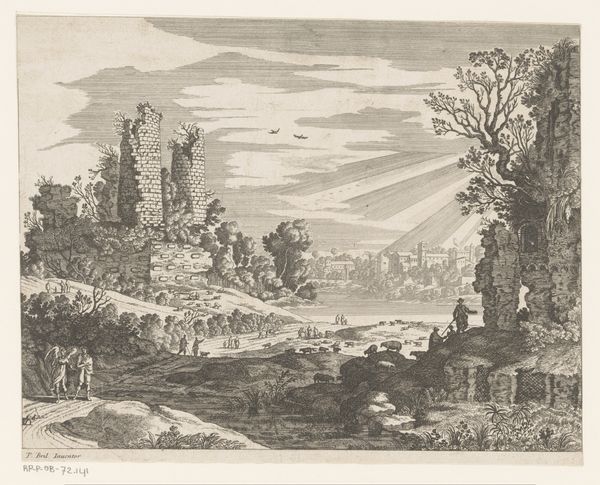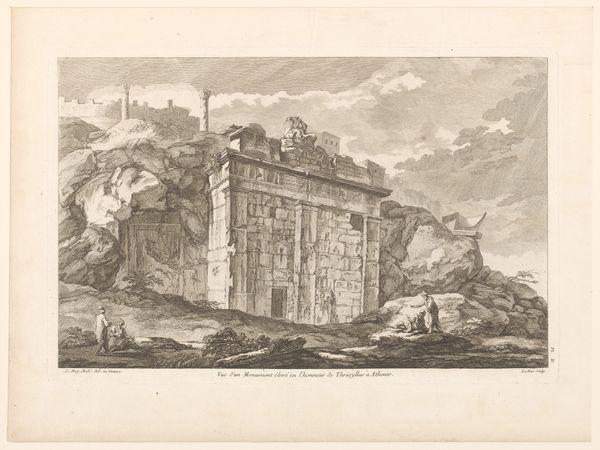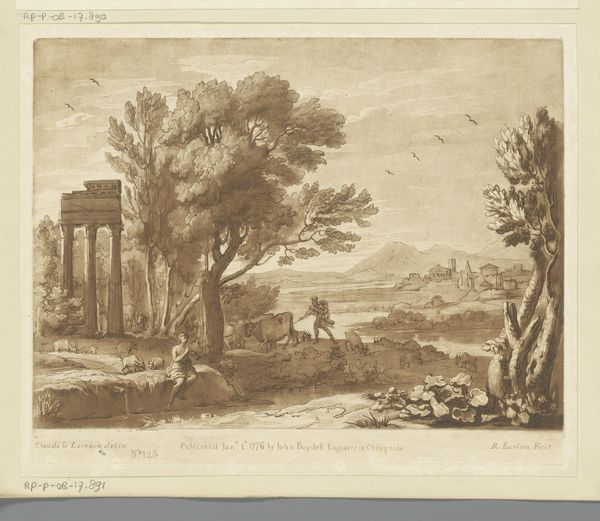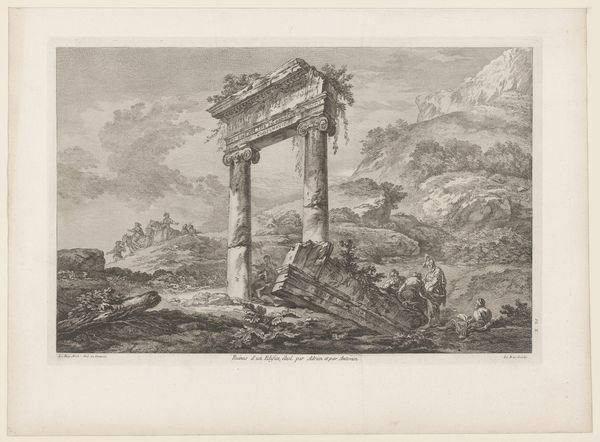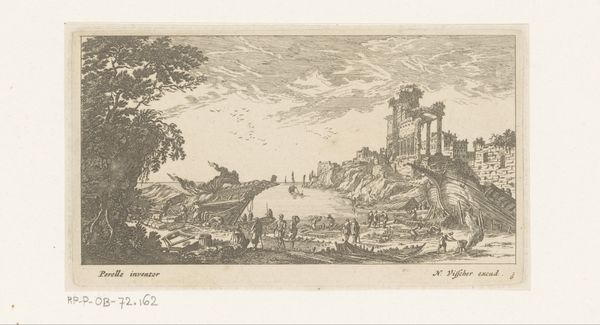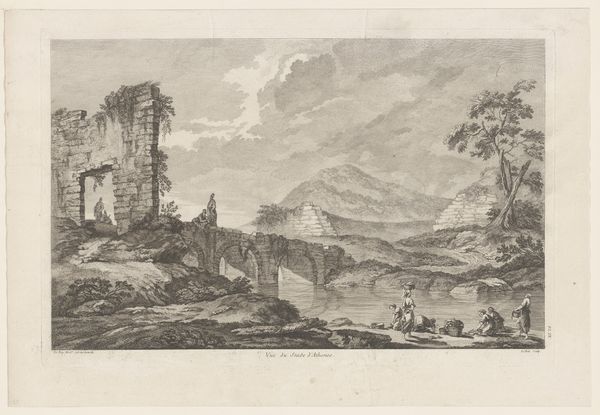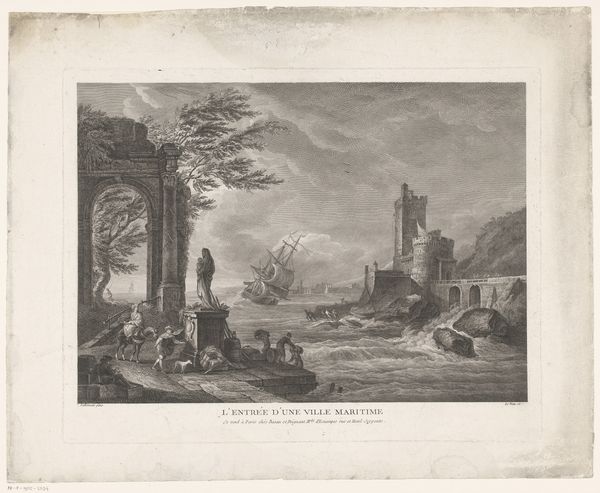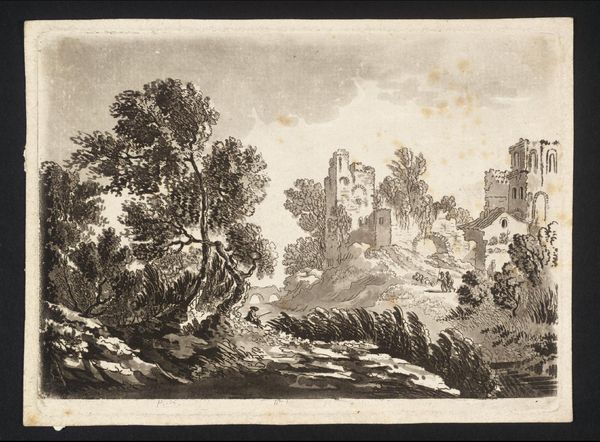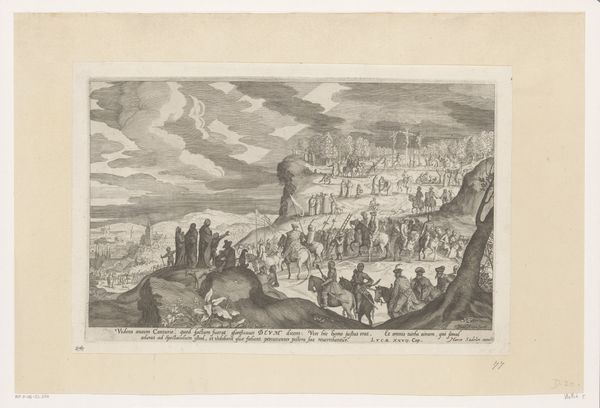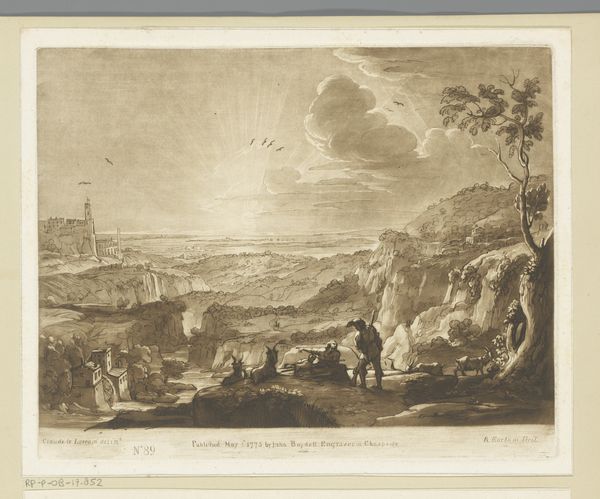
Gezicht op een ruïne te Athene, mogelijk het Dionysustheater 1758
0:00
0:00
engraving
#
neoclacissism
#
old engraving style
#
landscape
#
classical-realism
#
cityscape
#
history-painting
#
engraving
Dimensions: height 308 mm, width 467 mm
Copyright: Rijks Museum: Open Domain
Curator: Looking at this work from 1758 by Jacques Philippe Le Bas, titled "View of a Ruin in Athens, Possibly the Theatre of Dionysus," I'm immediately struck by its melancholic atmosphere. The rendering in engraving amplifies this effect. Editor: I see what you mean about the melancholic atmosphere. The heavy use of shadow definitely emphasizes that. The sun bursting through the clouds almost feels like a last, desperate gasp of light against encroaching darkness. Curator: Indeed. And that carefully placed light source above the classical ruin suggests a yearning for the past, filtered through a neoclassicist lens. This image encapsulates the burgeoning 18th-century obsession with antiquity, particularly Athens, not just as a place but as a powerful symbol. The figures in the landscape seem almost dwarfed by the ruins, a commentary perhaps on the ephemerality of human endeavor against the backdrop of historical time. Editor: I find it interesting how the ruined architecture mirrors the rocky landscape, almost as if nature itself is reclaiming the vestiges of civilization. What’s curious is the implication that idealized cultures will erode over time. Consider how the political upheaval and enlightenment thinking of the time likely influenced this reflection on the past, viewing ruins less as a sign of failure and more as a picturesque reminder of cycles of power and change. Curator: That's an astute observation regarding cycles of power and the reclaiming force of nature. You’re reminding me that we must view these types of picturesque depictions through the prism of their time. There's a distinct political and social narrative at play, especially when one considers how engravings like this circulated, influencing ideas about Greece and the classical world. It really allows the viewer a tangible sense of reflection, to reconsider values of art, politics, and the passage of time. Editor: Right, seeing isn't just about aesthetics, it's also about actively engaging with how such scenes shaped and were shaped by their audience’s values. I feel like I now see this as not merely a depiction, but also an early form of cultural and political commentary, using landscape as its stage. Curator: It does provide a new way of reflecting on an image like this. Editor: Indeed, it seems an artwork such as this one functions almost as a visual elegy, intertwining the past, present, and future into a complex interplay of light, shadow, and meaning.
Comments
No comments
Be the first to comment and join the conversation on the ultimate creative platform.
